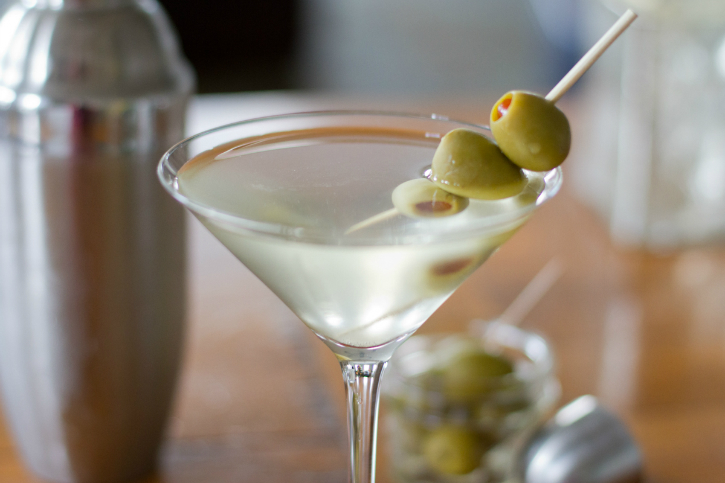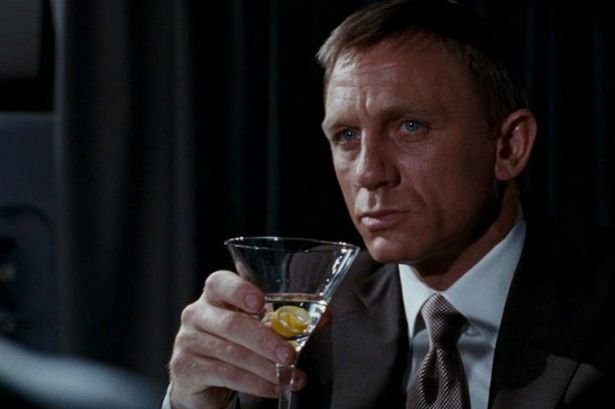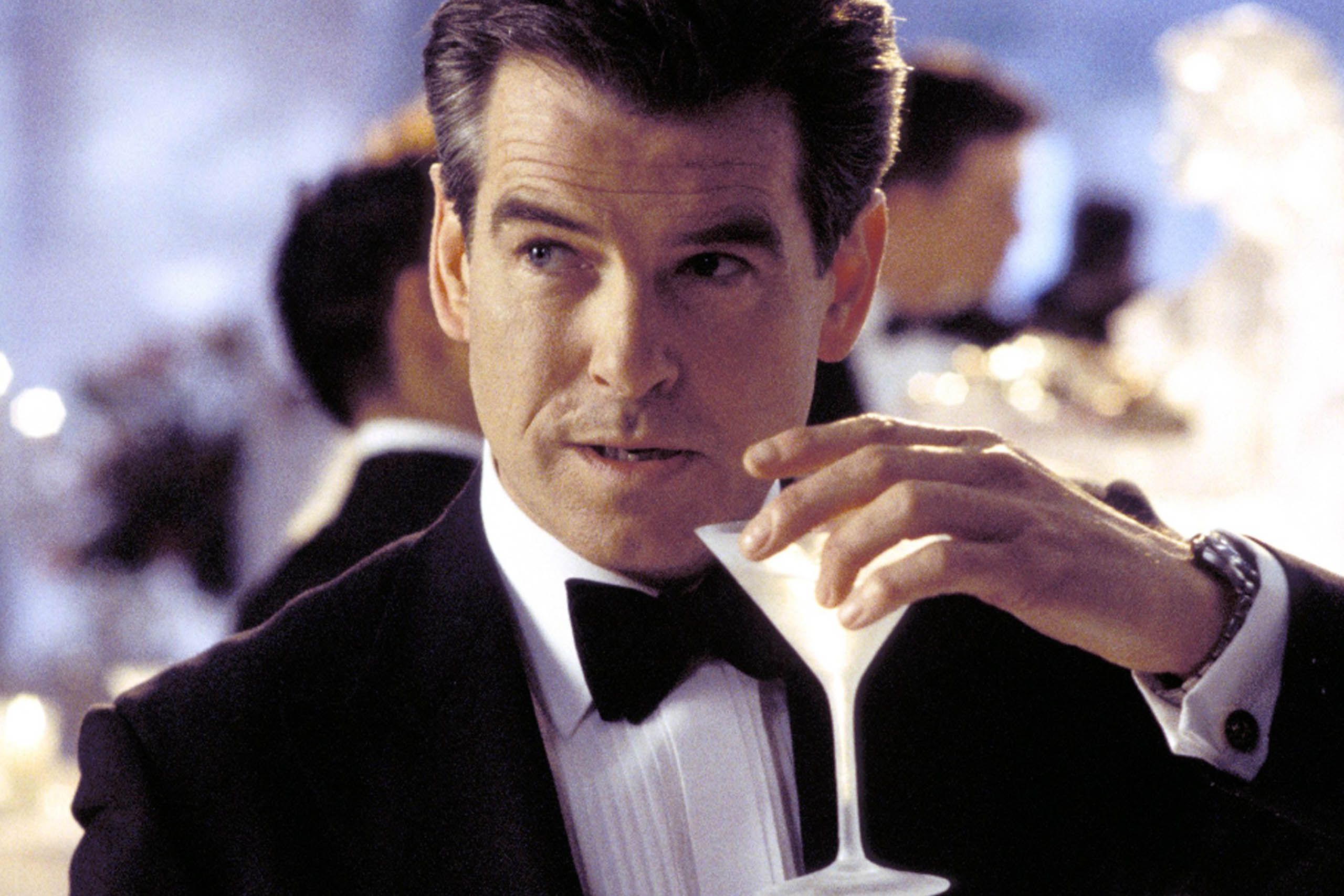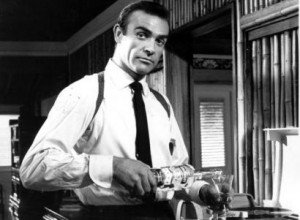Stars of cocktails - The Martini #5
The Martini

Is a cocktail made with gin and vermouth, and garnished with an olive or a lemon twist. Over the years, the martini has become one of the best-known mixed alcoholic beverages. H. L. Mencken called the martini "the only American invention as perfect as the sonnet" and E. B. White called it "the elixir of quietude".
Preparation
By 1922 the Martini reached its most recognizable form in which London dry gin and dry vermouth are combined at a ratio of 2:1, stirred in a mixing glass with ice cubes, with the optional addition of orange or aromatic bitters, then strained into a chilled cocktail glass. Over time the generally expected garnish became the drinker's choice of a green olive or a twist of lemon peel.
A dry Martini is made with dry, white vermouth. By the Roaring Twenties, it became common to ask for them. Over the course of the century, the amount of vermouth steadily dropped.
A dirty Martini contains a splash of olive brine or olive juice and is typically garnished with an olive.
A perfect Martini uses equal amounts of sweet and dry vermouth.
Some Martinis were prepared by filling a cocktail glass with gin, then rubbing a finger of vermouth along the rim. There are those who advocated the elimination of vermouth altogether. According to Noël Coward, "A perfect Martini should be made by filling a glass with gin, then waving it in the general direction of Italy," Italy being a major producer of vermouth. Luis Buñuel used the dry Martini as part of his creative process, regularly using it to sustain "a reverie in a bar". He offers his own recipe, involving Angostura bitters, in his memory.

In 1966, the American Standards Association (ASA) released K100.1-1966, "Safety Code and Requirements for Dry Martinis," a tongue-in-cheek account of how to make a "standard" dry martini. The latest revision of this document, K100.1-1974, was published by American National Standards Institute (ANSI), the successor to ASA, though it is no longer an active standard.
There are a number of variations on the traditional Martini. The fictional spy James Bond sometimes asked for his Vodka Martinis to be "shaken, not stirred," following Harry Craddock's The Savoy Cocktail Book (1930), which prescribes shaking for all its Martini recipes. The proper name for a shaken Martini is a Bradford. However, Somerset Maugham is often quoted as saying that "a Martini should always be stirred, not shaken, so that the molecules lie sensuously on top of one another." A Martini may also be served on the rocks, that is, with the ingredients poured over ice cubes and served in an Old-Fashioned glass.
Origins and mixology
The exact origin of the martini is unclear. In 1863, an Italian vermouth maker started marketing their product under the brand name of Martini, after its director Alessandro Martini, and the brand name may be the source of the cocktail's name.
Another popular theory suggests it evolved from a cocktail called the Martinez served sometime in the early 1860s at the Occidental Hotel in San Francisco, which people frequented before taking an evening ferry to the nearby town of Martinez. Alternatively, the people of Martinez say the drink was first created by a bartender in their town, or maybe the drink was named after the town. Indeed, a "Martinez Cocktail" was first described in Jerry Thomas' 1887 edition of his "Bartender's Guide, How to Mix All Kinds of Plain and Fancy Drinks".

Numerous cocktails with names and ingredients similar to the modern-day martini were seen in other bartending guides of the late 19th century. For example, in the 1888 Bartenders' Manual there was a recipe for a drink that consisted in part of half a wine glass of Old Tom Gin and a half a wine glass of vermouth.
The first dry martini is sometimes linked to the name of a bartender who concocted the drink at the Knickerbocker Hotel in New York City in 1911 or 1912. The "Marguerite Cocktail", first described in 1904, could be considered an early form of the dry Martini, consisting as it did of a 2:1 mix of Plymouth dry gin and dry vermouth, with a dash of orange bitters.
During Prohibition the relative ease of illegal gin manufacture led to the martini's rise as the predominant cocktail of the mid-20th century in the United States. With the repeal of Prohibition, and the ready availability of quality gin, the drink became progressively drier. In the 1970s and 80s, the martini came to be seen as old-fashioned and was replaced by more intricate cocktails and wine spritzers, but the mid-1990s saw a resurgence in the drink and numerous new versions.
Some newer drinks include the word "martini" or the suffix "-tini" in the name (e.g., appletini, peach martini, chocolate martini, espresso martini). These are named after the martini cocktail glass they use and generally contain vodka but share little else in common with the drink. The closest relation and best known of these is the "vodka martini", which previously existed starting in the 1950s under the name kangaroo cocktail before taking on the Martini name.

Dry Martini recipe
5 cl of gin
1 cl of dry vermouth
Make the recipe "Dry martini" in a mixing glass.
Pour vermouth and gin into the mixing glass. Fill with 2/3 ice cubes. Strike quickly with the mixing spoon up and down. Serve while holding the ice cubes in the refreshed glass and decorated with an olive piqued with a stick at the bottom of the glass.
Serve in a glass type "martini glass"
"the elixir of quietude"....great history...
The very night I learned what a Martini was I wound up crawling home! :)
No joke
😊
There is no better drink that just iced martini with no additives)
interesting post @lndesta120282
Fabulous one!!!
Good post
nice post!
Great post,
please upvote, comment, and follow me I'm going to follow you
:-)
mmmm martini ... testy ))